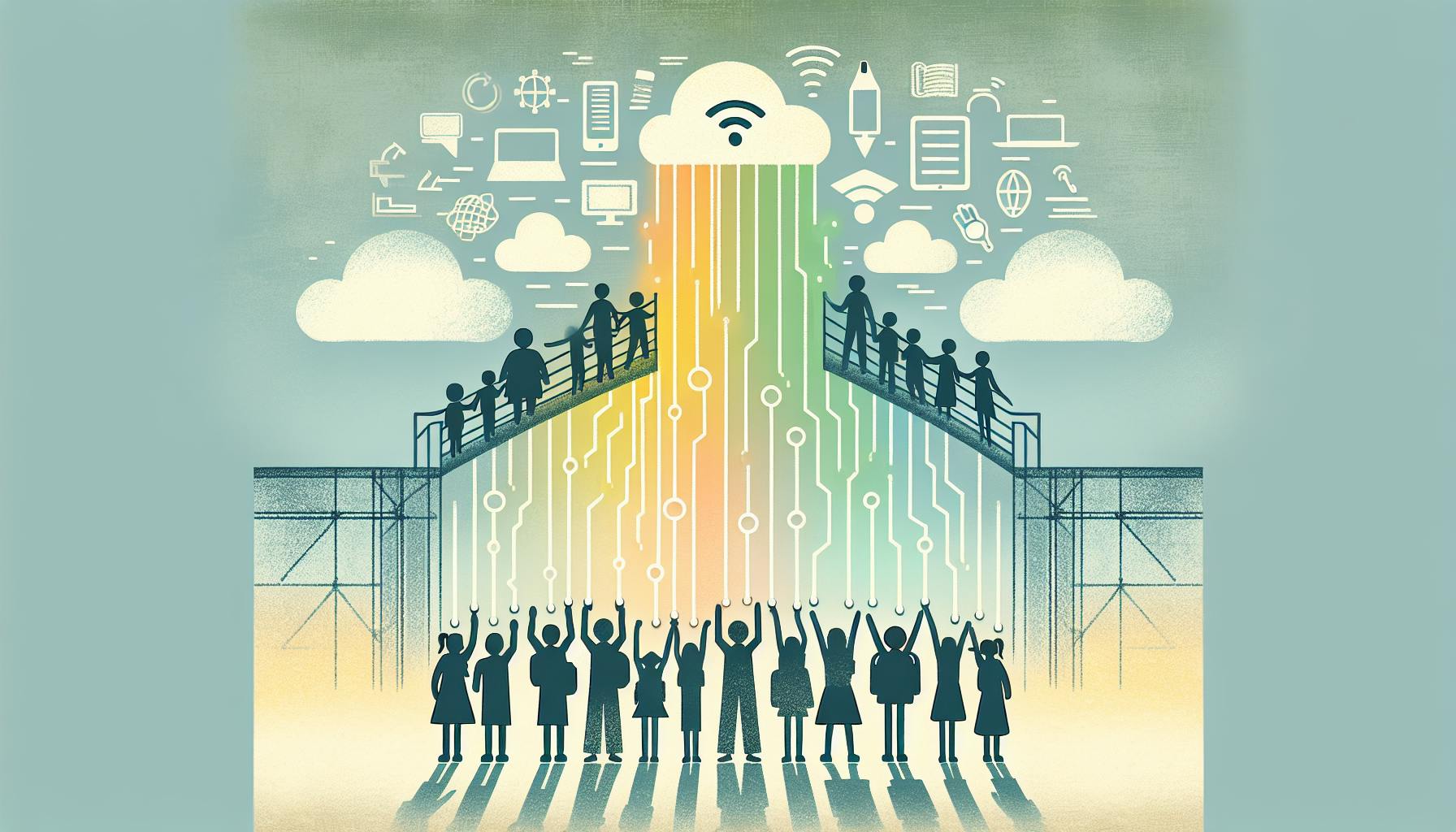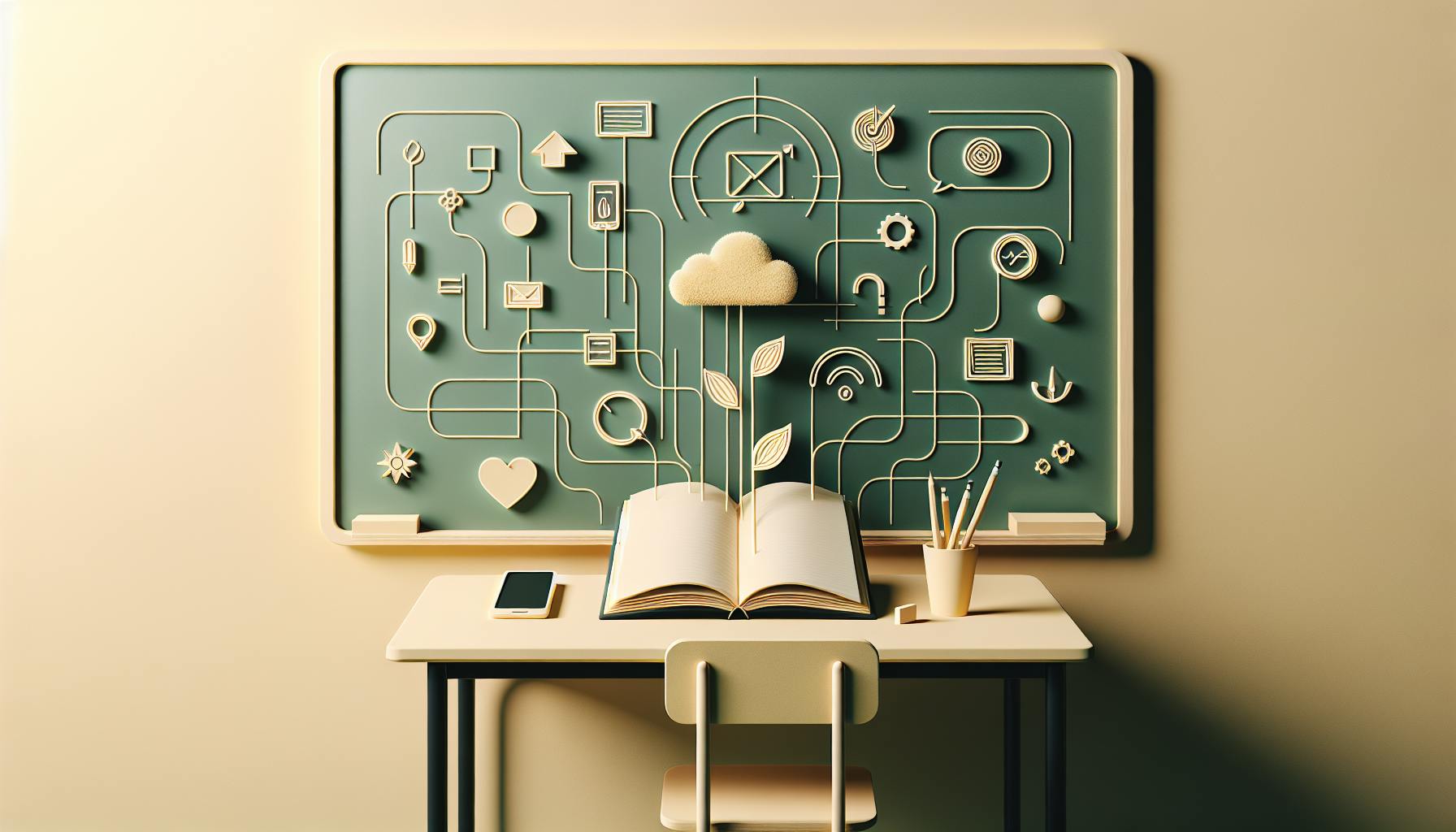Most teachers would agree that traditional lecture-based learning in the classroom can feel stagnant for students.
But there are innovative experiential learning strategies that go beyond textbooks to actively engage and inspire students...
In this post, we'll define experiential learning, explore its benefits over passive learning methods, and outline specific techniques you can implement to create captivating hands-on experiences for your students.
Introduction
Experiential learning provides students with immersive, hands-on experiences that engage multiple senses and promote deeper understanding compared to traditional book learning. This article outlines strategies educators can use to bring experiential learning into their classrooms. The goal is to inspire students' natural curiosity and empower them to take ownership of their education through active participation.
Defining Experiential Learning
Experiential learning refers to the process of learning through hands-on experience and practice. Key characteristics include:
- Learning by doing, through activities and simulations
- Engaging multiple senses - sight, sound, touch, etc.
- Promoting deeper learning through real-world applications
- Fostering collaboration, communication and critical thinking
This contrasts with traditional book learning focused on rote memorization and passive absorption of information.
The Benefits
Research shows experiential learning boosts student engagement, information retention, and higher-order thinking skills. Benefits include:
- Increased motivation and participation
- Development of problem-solving abilities
- Improved memory through multisensory encoding
- Real-world skill building
By grounding lessons in interactive, applied contexts, experiential learning empowers students to take active ownership in the learning process.
What are the strategies for experiential learning?
Experiential learning provides students with opportunities to apply their knowledge and skills to real-world situations. Here are some key strategies to incorporate experiential learning into your teaching:
Share a vision
- Articulate clear learning objectives and explain how experiential activities connect back to course concepts. This establishes purpose and relevance.
Provide modeling
- Demonstrate what success looks like. Break down complex tasks and allow students to observe before jumping in.
Scaffold challenges
- Progress from simpler to more complex activities. Provide enough support for students to take risks and stretch themselves intellectually.
Personalize feedback
- Give specific, actionable feedback frequently. Tie observations back to learning goals. Ask reflective questions.
Create immersive lessons
- Design interactive scenarios. Leverage multiple senses through sights, sounds, movements. Transport students into a role, problem or challenge.
Incorporate reflection
- Schedule time for students to process experiences. Guide them in connecting insights back to key learnings and goals. Reflection cements growth.
Following these core methods will lead to rich, transformative learning that sticks with students long after the course ends. Adjust strategies to align with your subject matter, students' needs and environments available.
What are the 7 processes the learners engage in throughout the experiential learning process?
The 7 key processes learners engage with in experiential learning are:
-
Posing questions - Learners ask questions to guide their investigation and inquiry. This sparks curiosity and frames the learning experience.
-
Investigating - Learners gather information through research, observation, interviews, surveys, and other methods of active exploration.
-
Experimenting - Learners test hypotheses and try out ideas through hands-on experiments, prototypes, simulations, role plays, and trials and error.
-
Being curious - Learners cultivate an attitude of openness, wonder, and motivation to understand more deeply. Curiosity fuels engagement.
-
Solving problems - Learners apply critical thinking to overcome obstacles, find solutions, and achieve learning objectives through analysis and creativity.
-
Assuming responsibility - Learners exercise initiative, ownership, and accountability over their learning process and outcomes.
-
Being creative - Learners synthesize information and experiences to construct new meaning, knowledge, solutions, and products. Creativity enables transformation.
By moving through this experiential learning cycle, students actively create knowledge rather than passively receive it. This leads to deeper, stickier learning that builds critical 21st century skills. Experiential approaches empower student agency, curiosity, and love of learning.
What are the four types of experiential learning?
Experiential learning is based on a four-stage learning cycle that engages students through hands-on experience, reflection, conceptualization, and active experimentation.
Concrete Experience
The first stage involves learner participation in a new experience or situation, such as a science experiment, field trip, group project, or creative activity. This hands-on experience serves as the basis for observation and reflection in the next stages.
Reflective Observation
In the second stage, learners consciously reflect back on the concrete experience by describing and interpreting what happened. This reflection equips them to derive meaning and conceptualize theories about what they experienced.
Abstract Conceptualization
The third stage involves analyzing and making generalizations based on their reflections. Learners integrate their observations into logical theories and concepts that can explain the experience they had. This stage allows them to gain new perspectives on what they learned.
Active Experimentation
In the final stage, learners apply the theories and concepts they have learned to novel situations. This stage closes the learning loop, as experimentation leads to new concrete experiences.
What is an example of experiential learning approach?
Experiential learning provides students with hands-on experiences that bring classroom lessons to life. Some examples of experiential learning activities include:
Field Trips
Organizing field trips to museums, nature centers, historical sites, or local businesses allows students to explore new environments. Seeing concepts applied in the real world sparks curiosity and engagement. For example, an elementary school class could visit a bakery to see how math and science principles enable the baking process.
Cooking Projects
Cooking incorporates math, science, reading, and cultural education. Teachers could guide students in preparing regional dishes to learn about geography or make healthier versions of popular recipes to teach nutrition lessons. Cooking together fosters teamwork and life skills.
Art Activities
Creating art provides a creative outlet for students to demonstrate understanding. For example, students could paint or draw depictions of a novel's key scenes. Or they could use tactile media like clay to construct historical monuments. Art activities allow lessons to come alive with personal expression.
The interactive nature of experiential learning boosts student participation and memory retention. Immersed in a supportive environment, students gain confidence in applying their knowledge. These hands-on experiences spur engagement, curiosity and a passion for learning.
sbb-itb-bb2be89
Experiential Learning Activities
Experiential learning activities provide students with hands-on experiences that bring academic concepts to life. These activities engage multiple learning styles and inspire students' natural curiosity.
Problem/Project-Based Learning
Problem-based learning presents students with complex, real-world problems to solve in small groups. The teacher acts as a facilitator while students apply content knowledge and critical thinking skills to develop solutions. Benefits include:
- Improved problem-solving abilities
- Experience collaborating in teams
- Deeper understanding of subject matter
- Increased student engagement and motivation
Project-based learning allows students to explore topics more independently through student-driven projects. Students learn key skills like research, communication, time management, and self-direction. Example projects include designing websites, filming documentaries, or building models.
Role Playing and Simulations
Role playing and simulations immerse students in active learning experiences. Students adopt roles and make decisions within real-world scenarios, gaining firsthand insight into concepts. Examples include:
- Mock trials to analyze legal cases
- Model United Nations conferences to debate global issues
- Historical reenactments bringing history to life
Benefits include increased empathy, communication skills, and ability to view issues from diverse perspectives.
Field Trips and Service Learning
Field trips to educational sites like museums, nature preserves, or historical landmarks allow for guided exploration outside the classroom. Students make connections between academic material and the real world.
Service learning combines community service with classroom instruction. Students volunteer at organizations like food banks and homeless shelters, gaining exposure to social issues aligned with course concepts. Benefits include increased civic engagement and understanding of challenges facing local communities.
Implementation Strategies
Teachers can smoothly integrate experiential learning into their curriculum and class structure by following a few key tips:
Scaffolding Activities
When first adopting new experiential learning activities, it's important to start small and provide adequate support to students. Consider starting with short, simple activities rather than jumping into elaborate, multi-day projects. Provide clear instructions, model the desired behaviors, and debrief afterwards to check student understanding. As both you and your students become more comfortable, you can increase the complexity and duration of activities.
Aligning with Standards
Choose experiential learning activities that align with required academic standards and teach essential content knowledge and skills. When planning activities, consult your state/district standards and intentionally select projects that will allow students to engage with and demonstrate mastery of target learning objectives. Communicate connections to standards with students so they understand the purpose behind activities.
Managing the Classroom
Maintaining engagement and focus during active learning requires some classroom management strategies. Outline clear expectations before activities, use proximity and positive reinforcement during work time, and have students reflect afterwards. Consider grouping students strategically and assigning roles to keep them on-task. Circulate to redirect off-topic behavior. Setting up routines and procedures will streamline implementation over time.
Experiential Learning Platforms
Experiential learning provides students with hands-on experiences that bring academic concepts to life. EdTech tools designed specifically for experiential learning implementation can help teachers facilitate engaging project-based activities while also aligning with curriculum standards.
PBL and Project Management
Platforms like ProjectFoundry and PBLWorks offer templates and frameworks to guide problem/project-based learning. They provide organization for long-term projects with tools to map standards, assign student roles, and track progress. Their structured format helps teachers implement real-world projects that teach critical thinking and collaboration skills.
Virtual Simulations
Programs like Labster and zSpace create interactive virtual environments for experiential learning simulations. Students can conduct experiments, design prototypes, or roleplay scenarios to gain first-hand experience with lesson concepts. These simulations spark engagement and allow safe practice of skills from the comfort of the classroom.
Lesson Planning Integration
Tools like The Experiential Learning Depot and ISTE Standards in Action provide standards-aligned activities, lesson plans, and project ideas for experiential learning. Teachers can find and assign pre-made lessons or get inspiration to design their own. Seamless integration into existing curriculum helps teachers utilize experiential methods without added planning burden.
Measuring the Impact
Experiential learning activities can provide immense value to students, but assessing their true impact requires going beyond superficial measures. Here are some methods to dig deeper into understanding the benefits:
Qualitative Feedback
Collecting structured student feedback after activities can reveal key insights. Ask specific questions to gauge engagement, enjoyment, perceived learning gains, memorability, future applicability, and more. Analyze patterns in the responses to identify strengths and weaknesses. Quote poignant student perspectives to showcase impact.
Content Mastery Checks
Well-designed tests before and after activities, focusing on content application and critical thinking around key concepts, helps quantify learning gains. Compare scores to measure factual and cognitive improvements. Break down questions by complexity level.
Evaluating Skill Development
Rubrics, surveys, and observational assessments can track the development of skills like communication, collaboration, creativity over longer periods. Record baseline competencies, then re-evaluate after each major activity. Graph progress over time, highlighting growth in specific skill areas.
Getting data directly from students via quotes, tests, rubrics and surveys provides multifaceted insight into experiential learning efficacy. Quantify and qualify impacts across knowledge, comprehension, application, analysis, synthesis and evaluation. Demonstrate a commitment to continuous assessment and improvement.
Conclusion
Experiential learning provides students with impactful opportunities to engage with course material in meaningful ways. By moving beyond traditional lecturing and reading, educators can inspire excitement and curiosity through hands-on activities, experiments, simulations, and real-world projects.
While shifting pedagogies can feel daunting at first, remember to start small. Identify one or two activities or assignments to adapt, focusing on concepts you feel will resonate most with students’ interests and learning styles. Leverage available resources like project-based lesson plans and ready-made simulation kits. As you become more comfortable, continue layering in additional experiential elements over time.
The effort pays dividends in student motivation and comprehension. By tying course concepts to tangible experiences, students gain deeper understanding and enthusiasm. Experiential learning also builds critical thinking, communication, collaboration and other essential life skills.
Have confidence that small steps today will lead to greatly enriched learning environments tomorrow. Our students are counting on us to prepare them for the real world, not just standardized tests. Experiential learning bridges that gap, empowering students to think critically and apply knowledge. The future starts now.



